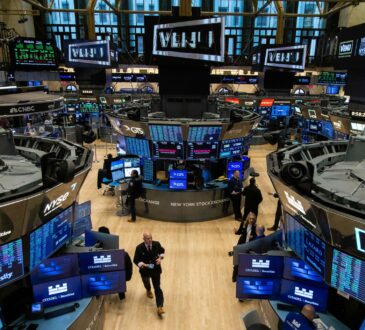Rupee-Dollar Exchange Rate: How currency fluctuations impact Indian investors US stock market investments – Investing Abroad News

By Viram Shah
In the globalized world of today, with financial markets more interconnected than ever, it is critical for investors to understand the impact of currency exchange rates on their investments. For Indian investors looking to invest in the US stock market, these exchange rate fluctuations can be a significant factor.
The Nifty 50 index, which represents 50 of the largest and most liquid stocks on the National Stock Exchange of India, generated a return of 75% over the past 5 years. This indicates that an investor who held a diversified portfolio of these stocks over this time period would have seen their investment grow by 75%.
Meanwhile, the Nasdaq, an American stock exchange that lists many technology and biotech firms, generated a return of 82% over the same period. This suggests that an investor holding a diversified portfolio of these stocks would have seen their investment grow by 82%.
At first glance, it might seem like the Nasdaq’s performance only slightly outpaced Nifty 50’s performance. However, this isn’t the complete picture for Indian investors who converted their rupees into dollars to invest in the Nasdaq.
The key to understanding real returns is the role of currency exchange rates. The Indian Rupee (INR) has depreciated against the US Dollar (USD) over the past 5 years. This means that the value of the USD (and thus, US investments) has increased relative to the INR.
The depreciation of the INR has amplified the returns for Indian investors in the Nasdaq. So, the 82% return in USD terms actually translates into a 120% return when converted back to INR.
Here’s how that works: suppose an investor put INR 100,000 into the Nasdaq five years ago. If the USD/INR exchange rate was 68 at that time, the investor would have started with about $1,470. Now, if their investments grew by 82%, they would have approximately $2,676.
If the USD/INR exchange rate has since increased to 82 due to the depreciation of the INR, then when the investor converts their $2,605 back into rupees, they end up with INR 219,470 – a 120% return on their initial INR 100,000 investment.
This example illustrates how currency exchange rates can significantly impact investment returns in international markets. When the domestic currency depreciates, it can magnify returns from foreign investments, but it can also amplify losses. As always, investing internationally comes with its own set of risks and rewards.
Impact on mutual funds investing in US equities
Indian investors can also gain exposure to the US market through mutual funds that invest in US equities. The same principles apply here. If the mutual fund invests in US stocks, the change in the INR/USD exchange rate will impact the NAV (Net Asset Value) of the mutual fund.
Consider a hypothetical scenario where an Indian mutual fund has invested 30% of its corpus in US equities. If the USD appreciates by 10% against the Indian Rupee and the US market delivers a 5% return, the Indian investor will gain additional 5% (approximately) in INR terms, excluding any fees or other charges. This scenario shows how Indian investors in US mutual funds can gain from both the US market’s performance and a favorable exchange rate.
Impact on domestic companies earning foreign revenue
Companies like Infosys, which earn a significant portion of their revenue in foreign currencies, can serve as a natural hedge against exchange rate risk. As of 2023, Infosys earned 60% of its revenue from North America. Consequently, a stronger dollar directly translates into more rupees for Infosys, boosting its profitability and share price.
The flip side of currency fluctuations
However, it’s crucial to remember that currency fluctuation can also work against the investor. Should the INR appreciate against the USD, the investment’s value could decrease, even if the stock price remains stable. In short, currency risk can amplify losses or dilute gains from the underlying investment.
Mitigating the risk
Currency risk is an integral part of investing in international markets. Investors should consider their risk tolerance and investment horizon while making these investments. Hedging against currency risk using futures or options is one strategy, but it may not be suitable for all investors due to its complexity and cost.
While global diversification is beneficial, investors should be mindful of their exposure to currency risk and make informed decisions. Consultation with a financial advisor is recommended to ensure an investment strategy that aligns with the investor’s goals and risk tolerance.
The bottom line
Currency fluctuations add an additional layer of complexity to investing in foreign stocks. While they can offer potential gains due to currency depreciation, they can also amplify losses. Therefore, it’s essential for Indian investors to consider the impact of currency exchange rates on their US investments.
Understanding these effects can help investors make informed decisions and potentially utilize hedging techniques to manage their currency risk effectively.
Despite the currency risks involved, the US stock market presents a lucrative opportunity for Indian investors to diversify their portfolios and potentially generate substantial returns. As the old adage goes, knowledge is power. Understanding the dynamic nature of the currency exchange market can empower investors to make better decisions and navigate these choppy financial waters with increased confidence.
(Author is Co-founder, CEO, Vested Finance and US Securities and Exchange Commission Registered Investment Adviser)


